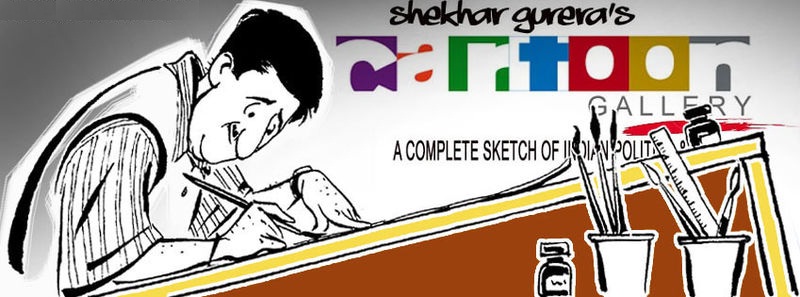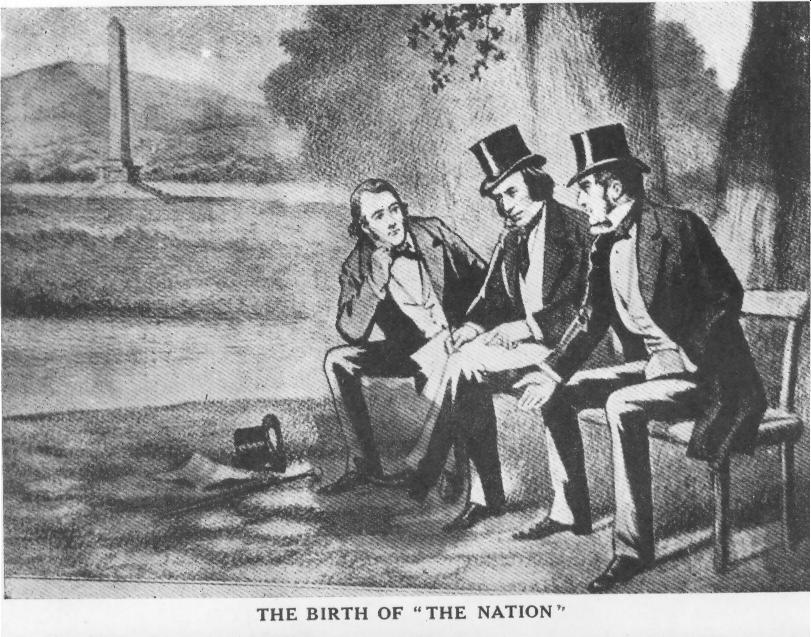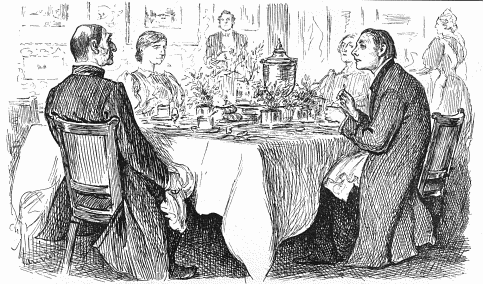|
Thomas Fitzpatrick (cartoonist)
Thomas Fitzpatrick (27 March 1860 – 16 July 1912), pen name Fitz, was an Irish political cartoonist. Fitzpatrick was born in Cork. He contributed to the satirical magazine ''Pat'' (published from 1881-1883), the '' Weekly Freeman'', the ''Irish Figaro'', the ''Irish Emerald'', the '' Weekly Nation'', ''Punch'' and the ''New York Gaelic American'', and was for a time chief cartoonist of the ''National Press''. In 1905 he launched his own satirical magazine, '' The Lepracaun'', which he edited and drew most of the cartoons and illustrations for until his health began to fail in 1911. James Joyce contributed short pieces and cartoon ideas. He died in Dublin. A collection of Fitzpatrick's cartoons from ''The Lepracaun'' was published in book form in 1913. He was also a master illuminator and with his daughter, artist Mary Fitzpatrick O'Brien, he produced many illuminated and richly decorated scrolls and paintings, many reflecting the influence of the early Celtic Revival ... [...More Info...] [...Related Items...] OR: [Wikipedia] [Google] [Baidu] |
Irish People
The Irish ( ga, Muintir na hÉireann or ''Na hÉireannaigh'') are an ethnic group and nation native to the island of Ireland, who share a common history and culture. There have been humans in Ireland for about 33,000 years, and it has been continually inhabited for more than 10,000 years (see Prehistoric Ireland). For most of Ireland's recorded history, the Irish have been primarily a Gaelic people (see Gaelic Ireland). From the 9th century, small numbers of Vikings settled in Ireland, becoming the Norse-Gaels. Anglo-Normans also conquered parts of Ireland in the 12th century, while England's 16th/17th century conquest and colonisation of Ireland brought many English and Lowland Scots to parts of the island, especially the north. Today, Ireland is made up of the Republic of Ireland (officially called Ireland) and Northern Ireland (a part of the United Kingdom). The people of Northern Ireland hold various national identities including British, Irish, Northern Irish or som ... [...More Info...] [...Related Items...] OR: [Wikipedia] [Google] [Baidu] |
Political Cartoonist
An editorial cartoonist, also known as a political cartoonist, is an artist who draws editorial cartoons that contain some level of political or social commentary. Their cartoons are used to convey and question an aspect of daily news or current affairs in a national or international context. Political cartoonists generally adopt a caricaturist style of drawing, to capture the likeness of a politician or subject. They may also employ humor or satire to ridicule an individual or group, emphasize their point of view or comment on a particular event. Media trends The traditional and most common outlet for political cartoonists is the pocket cartoon, which usually appears in the editorial page or the front news page of a newspaper, in the front news section of a newspaper. Editorial cartoons are not usually found in the dedicated comics section, although certain cartoons or comic strips have achieved crossover status. Historically, these are quick, hand-drawn ink drawings, scanned ... [...More Info...] [...Related Items...] OR: [Wikipedia] [Google] [Baidu] |
Cork (city)
Cork ( , from , meaning 'marsh') is the second largest city in Ireland and third largest city by population on the island of Ireland. It is located in the south-west of Ireland, in the province of Munster. Following an extension to the city's boundary in 2019, its population is over 222,000. The city centre is an island positioned between two channels of the River Lee which meet downstream at the eastern end of the city centre, where the quays and docks along the river lead outwards towards Lough Mahon and Cork Harbour, one of the largest natural harbours in the world. Originally a monastic settlement, Cork was expanded by Viking invaders around 915. Its charter was granted by Prince John in 1185. Cork city was once fully walled, and the remnants of the old medieval town centre can be found around South and North Main streets. The city's cognomen of "the rebel city" originates in its support for the Yorkist cause in the Wars of the Roses. Corkonians sometimes refer to ... [...More Info...] [...Related Items...] OR: [Wikipedia] [Google] [Baidu] |
Freeman's Journal
The ''Freeman's Journal'', which was published continuously in Dublin from 1763 to 1924, was in the nineteenth century Ireland's leading nationalist newspaper. Patriot journal It was founded in 1763 by Charles Lucas and was identified with radical 18th-century Protestant patriot politicians Henry Grattan and Henry Flood. This changed from 1784 when it passed to Francis Higgins (better known as the "Sham Squire") and took a more pro-British and pro-administration view. In fact Francis Higgins is mentioned in the Secret Service Money Book as having betrayed Lord Edward FitzGerald. Higgins was paid £1,000 for information on FitzGerald's capture. Voice of constitutional nationalism In the 19th century it became more nationalist in tone, particularly under the control and inspiration of Sir John Gray (1815–75). ''The Journal'', as it was widely known as, was the leading newspaper in Ireland throughout the 19th century. Contemporary sources record it being read to the largely ill ... [...More Info...] [...Related Items...] OR: [Wikipedia] [Google] [Baidu] |
The Nation (Irish Newspaper)
''The Nation'' was an Irish nationalist weekly newspaper, published in the 19th century. ''The Nation'' was printed first at 12 Trinity Street, Dublin from 15 October 1842 until 6 January 1844. The paper was afterwards published at 4 D'Olier Street from 13 July 1844, to 28 July 1848, when the issue for the following day was seized and the paper suppressed. It was published again in Middle Abbey Street on its revival in September 1849. Background The founders of ''The Nation'' were three young men – two Catholics and one Protestant – who, according to the historian of the newspaper T. F. O'Sullivan, were all "free from the slightest taint of bigotry, and were anxious to unite all creeds and classes for the country's welfare.".Young Ireland, T. F. O'Sullivan, The Kerryman Ltd. 1945 pg 6 They were Charles Gavan Duffy, its first editor; Thomas Davis, and John Blake Dillon. All three were members of Daniel O'Connell's Repeal Association, which sought repeal of the 1800 Act ... [...More Info...] [...Related Items...] OR: [Wikipedia] [Google] [Baidu] |
Punch (magazine)
''Punch, or The London Charivari'' was a British weekly magazine of humour and satire established in 1841 by Henry Mayhew and wood-engraver Ebenezer Landells. Historically, it was most influential in the 1840s and 1850s, when it helped to coin the term " cartoon" in its modern sense as a humorous illustration. From 1850, John Tenniel was the chief cartoon artist at the magazine for over 50 years. After the 1940s, when its circulation peaked, it went into a long decline, closing in 1992. It was revived in 1996, but closed again in 2002. History ''Punch'' was founded on 17 July 1841 by Henry Mayhew and wood-engraver Ebenezer Landells, on an initial investment of £25. It was jointly edited by Mayhew and Mark Lemon. It was subtitled ''The London Charivari'' in homage to Charles Philipon's French satirical humour magazine ''Le Charivari''. Reflecting their satiric and humorous intent, the two editors took for their name and masthead the anarchic glove puppet, Mr. Punch, of Punc ... [...More Info...] [...Related Items...] OR: [Wikipedia] [Google] [Baidu] |
The Lepracaun Cartoon Monthly
''The Lepracaun Cartoon Monthly'' was a magazine of satirical and humorous material founded by Irish cartoonist Thomas Fitzpatrick in 1905.Theo Snoddy, ''Dictionary of Irish Artists: 20th Century'', Merlin Publishing, 2002 It included some of Fitzpatrick's finest and most entertaining work, mainly about Irish politics.Thomas Fitzpatrick, cartoonist, 1860-1912 http://www.libraryireland.com/irishartists/thomas-fitzpatrick.php Some contributors of note were James Joyce, John Fergus O'Hea John Fergus O'Hea (''c.'' 1838 – 2 September 1922) was an Irish political cartoonist who sometimes published under the pseudonym Spex. Born in Cork, he was the son of James O'Hea, a barrister who was active in the Young Ireland movement and ha ... and Mary Fitzpatrick O'Brien, Fitzpatrick's daughter who took over the magazine after his death in 1912. There are varying reports of when the ''Lepracaun Cartoon Monthly'' ceased publication, one source reporting 1919 and another reporting less th ... [...More Info...] [...Related Items...] OR: [Wikipedia] [Google] [Baidu] |
James Joyce
James Augustine Aloysius Joyce (2 February 1882 – 13 January 1941) was an Irish novelist, poet, and literary critic. He contributed to the modernist avant-garde movement and is regarded as one of the most influential and important writers of the 20th century. Joyce's novel ''Ulysses'' (1922) is a landmark in which the episodes of Homer's ''Odyssey'' are paralleled in a variety of literary styles, particularly stream of consciousness. Other well-known works are the short-story collection ''Dubliners'' (1914), and the novels ''A Portrait of the Artist as a Young Man'' (1916) and ''Finnegans Wake'' (1939). His other writings include three books of poetry, a play, letters, and occasional journalism. Joyce was born in Dublin into a middle-class family. He attended the Jesuit Clongowes Wood College in County Kildare, then, briefly, the Christian Brothers-run O'Connell School. Despite the chaotic family life imposed by his father's unpredictable finances, he excelled at the Jesuit ... [...More Info...] [...Related Items...] OR: [Wikipedia] [Google] [Baidu] |
Dublin
Dublin (; , or ) is the capital and largest city of Republic of Ireland, Ireland. On a bay at the mouth of the River Liffey, it is in the Provinces of Ireland, province of Leinster, bordered on the south by the Dublin Mountains, a part of the Wicklow Mountains range. At the 2016 census of Ireland, 2016 census it had a population of 1,173,179, while the preliminary results of the 2022 census of Ireland, 2022 census recorded that County Dublin as a whole had a population of 1,450,701, and that the population of the Greater Dublin Area was over 2 million, or roughly 40% of the Republic of Ireland's total population. A settlement was established in the area by the Gaels during or before the 7th century, followed by the Vikings. As the Kings of Dublin, Kingdom of Dublin grew, it became Ireland's principal settlement by the 12th century Anglo-Norman invasion of Ireland. The city expanded rapidly from the 17th century and was briefly the second largest in the British Empire and sixt ... [...More Info...] [...Related Items...] OR: [Wikipedia] [Google] [Baidu] |
Celtic Revival
The Celtic Revival (also referred to as the Celtic Twilight) is a variety of movements and trends in the 19th, 20th and 21st centuries that see a renewed interest in aspects of Celtic culture. Artists and writers drew on the traditions of Gaelic literature, Welsh-language literature, and so-called 'Celtic art'—what historians call Insular art (the Early Medieval style of Ireland and Britain). Although the revival was complex and multifaceted, occurring across many fields and in various countries in Northwest Europe, its best known incarnation is probably the Irish Literary Revival. Irish writers including William Butler Yeats, Lady Gregory, "AE" Russell, Edward Martyn, Alice Milligan and Edward Plunkett (Lord Dunsany) stimulated a new appreciation of traditional Irish literature and Irish poetry in the late 19th and early 20th century. In aspects the revival came to represent a reaction to modernisation. This is particularly true in Ireland, where the relationship betwee ... [...More Info...] [...Related Items...] OR: [Wikipedia] [Google] [Baidu] |
Jim Fitzpatrick (artist)
Jim Fitzpatrick (born James Fitzpatrick in 1944) is an Irish artist. He is best known for elaborately detailed work inspired by the Irish Celtic artistic tradition. However, his most famous single piece is a two-tone portrait of Che Guevara created in 1968, based on a photo by Alberto Korda. Early life Jim Fitzpatrick was born in December 1944 to James and Elizabeth Fitzpatrick (née O'Connor). His parents had married in the north Dublin suburb of Cabra in June 1943. During a period of childhood sickness, Fitzpatrick read and drew in bed, as well as his mother and great-aunt telling him stories of the Tuatha Dé Danann, Cú Chulainn and Fionn MacCumhaill. He was educated at the Franciscan College Gormanston, County Meath, just north of Dublin. His father was a photo-journalist and he is a grandson of political cartoonist Thomas Fitzpatrick. Career Fitzpatrick's earliest work was the graphic portrait of Che Guevara, which was based on the photograph by Alberto Korda, en ... [...More Info...] [...Related Items...] OR: [Wikipedia] [Google] [Baidu] |







